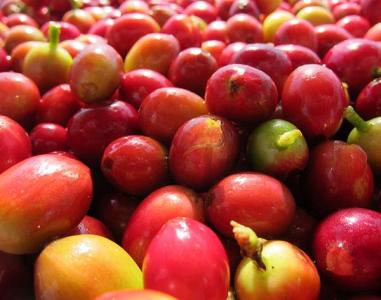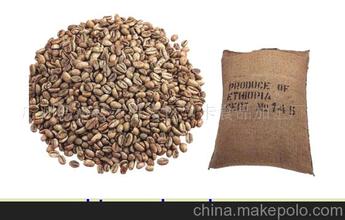Anatomical diagram of coffee beans-step diagram of hand-brewing coffee from how coffee beans grow
Anatomical diagram of coffee beans-step diagram of hand-brewing coffee from how coffee beans grow
The concept of "boutique coffee" first appeared in 1974, when Erna Knutsen regarded "boutique coffee" as "coffee beans with the best flavor produced in a special microclimate", but boutique coffee is not necessarily luxury top coffee. According to the definition of the American Fine Coffee Association (SCAA), only coffee with a cup score of 8-10 can be called "boutique coffee". The first step is to smell the fragrance; the second step is to test the flavor, taste, acidity, taste and balance; the third step is to test sweetness, evenness and cleanliness; and finally, the score.
Compared with commercial coffee, boutique coffee pays more attention to quality. Hoffman pointed out that "there are many different manifestations in production and international trade." In the Coffee 3.0 wave, the boutique coffee exploration team pays more attention to the fair trade cooperation with coffee growers and selects beans with unique flavor in the coffee producing area.
After washing / drying and transportation, the value of coffee beans has been further enhanced in the baking workshop. Finally, when baristas play a key role, how to use accurate scientific methods to brew a cup of fine coffee that is just right and even amazing. All in all, the origin, freshness, baking method, picking time, water quality, temperature, time and the quantity of coffee powder, the choice of brewing equipment and even brewing techniques will affect the final taste of a cup of fine coffee.
The Rapavani double-hole machine Ideale, patented in 1950, is a pioneer in the same type of coffee machine, which promotes espresso to Europe.
The emergence of V60, Aeropress, Chemex and other simple home hand coffee utensils brings vitality to the vigorous development of boutique coffee.
Of course, the flavor of boutique coffee is more affected by the local environment, so Hoffman focuses more on the origin of coffee. There are more than 35 countries and regions in the three continents. Hoffman begins by introducing the history of coffee from various countries, discusses the effects of geographical environment and climatic conditions on the flavor, and further compares the differences between different growing areas in the same country.
In addition, in the introduction of the coffee producing areas of various countries, Hoffman's concise description of the flavor of the coffee producing areas of the country can be found, which can better meet the needs of coffee lovers for reference books, highly generalized and easy to refer to. It can be said that Hoffman's purpose is to sort out the complex coffee producing areas and achieve the traceability of fine coffee (Traceability). Like wine, the information from producing country, producing area to specific manor is transparent.

Important Notice :
前街咖啡 FrontStreet Coffee has moved to new addredd:
FrontStreet Coffee Address: 315,Donghua East Road,GuangZhou
Tel:020 38364473
- Prev

Steps to roast coffee beans-Starbucks concentrated roasted coffee beans
Steps for boutique roasting coffee beans-Starbucks concentrated roasted coffee beans what does this have to do with packaging? This important question requires a glimpse into the mysteries of the cell wall structure in coffee beans. The cell walls in coffee beans are only about 5 microns thick, and they can withstand the pressure of 140psi (pounds per square inch), which mainly comes from carbon dioxide produced during the second half of the baking process.
- Next

How many coffee beans can a coffee tree produce?-introduction to the origin and varieties of coffee beans.
How many coffee beans can a coffee tree produce? one of the characteristics of a coffee tree is that its fruit can bear fruit several times a year, and that flowers and fruits (also known as cherries) coexist at different stages of ripening. The whole coffee harvest is swayed by the vagaries of nature. If the fruit is too ripe, the beans in it will rot. If not
Related
- Guji coffee producing area of Guji, Ethiopia: Humbela, Shakiso, Wulaga
- What is the most expensive variety of Qiloso in BOP multi-variety group?
- How to store the coffee beans bought home?
- Why are Yemeni coffee beans so rare now?
- Ethiopian Sidamo all Red Fruit Sun Sun Santa Vini Coffee beans
- SOE is mostly sour? What does it mean? Is it a single bean? what's the difference between it and Italian blending?
- Is Italian coffee beans suitable for making hand-brewed coffee?
- How to choose coffee beans when making cold coffee? What kind of coffee beans are suitable for making cold coffee?
- Just entered the pit to make coffee, what kind of coffee beans should be chosen?
- Can only Japan buy real Blue Mountain Coffee? What are authentic Jamaican Blue Mountain coffee beans?

